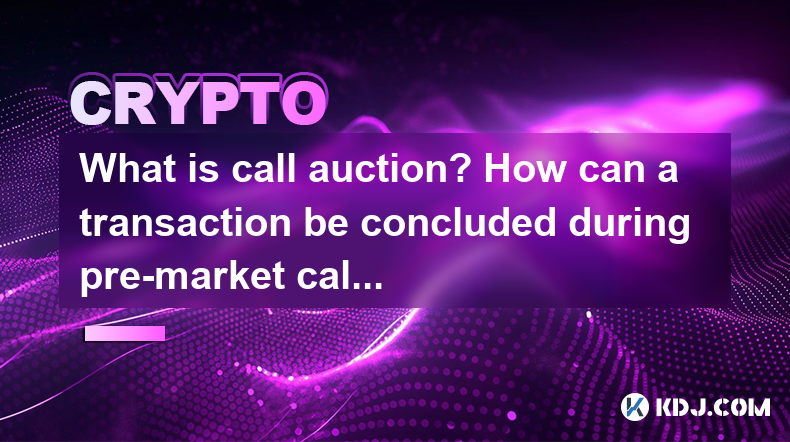-
 Bitcoin
Bitcoin $104,937.3144
3.15% -
 Ethereum
Ethereum $2,716.1736
10.65% -
 XRP
XRP $2.6000
4.73% -
 Tether USDt
Tether USDt $1.0003
0.03% -
 Solana
Solana $183.0992
7.53% -
 BNB
BNB $669.9773
1.81% -
 USDC
USDC $1.0001
0.03% -
 Dogecoin
Dogecoin $0.2417
6.96% -
 Cardano
Cardano $0.8378
4.73% -
 TRON
TRON $0.2727
0.26% -
 Sui
Sui $4.0892
4.91% -
 Chainlink
Chainlink $17.7031
7.86% -
 Avalanche
Avalanche $25.9982
6.61% -
 Stellar
Stellar $0.3174
3.11% -
 Shiba Inu
Shiba Inu $0.0...01654
7.56% -
 Hedera
Hedera $0.2178
3.08% -
 Hyperliquid
Hyperliquid $26.3405
9.74% -
 Toncoin
Toncoin $3.4233
3.21% -
 Pi
Pi $1.1872
7.77% -
 Polkadot
Polkadot $5.2507
4.56% -
 Bitcoin Cash
Bitcoin Cash $415.0580
2.04% -
 UNUS SED LEO
UNUS SED LEO $8.7242
2.70% -
 Litecoin
Litecoin $104.4889
3.63% -
 Monero
Monero $341.5804
1.72% -
 Pepe
Pepe $0.0...01496
12.57% -
 Bitget Token
Bitget Token $4.8415
2.07% -
 Dai
Dai $1.0002
0.02% -
 Ethena USDe
Ethena USDe $1.0011
0.02% -
 Uniswap
Uniswap $7.3306
7.46% -
 Bittensor
Bittensor $469.6988
3.74%
What is call auction? How can a transaction be concluded during pre-market call auction?
Pre-market call auctions facilitate price discovery and liquidity prior to regular trading hours by matching buy and sell orders, resulting in the establishment of an opening price for an asset.
Jan 24, 2025 at 07:30 pm

Key Points:
- Definition of call auction
- Mechanics of a pre-market call auction
- Participants involved in a call auction
- Order types and their impact on the auction
- Factors influencing call auction outcomes
What is Call Auction?
A call auction is a specific type of auction conducted in financial markets, particularly in the cryptocurrency space, to determine the opening price of an asset at the start of a trading day. It is a brief period during which market participants can place orders to buy or sell a particular asset, and the resulting price represents the consensus value agreed upon by all participants.
How Can a Transaction Be Concluded During Pre-Market Call Auction?
Prior to the commencement of regular trading hours, a pre-market call auction is often conducted to facilitate price discovery and liquidity. Here's an overview of the steps involved:
- Market Open: The call auction typically begins at a predetermined time before the market opens.
- Order Placement: Market participants are given a defined window to place limit or market orders to buy or sell the asset.
- Matching Orders: The auction engine matches buy and sell orders based on price and time priority. Orders are filled at the equilibrium price where the aggregate demand equals the aggregate supply.
- Price Determination: The auction concludes with the establishment of an opening price that reflects the balance between buy and sell interest.
- Order Execution: The matched buy and sell orders are executed at the established opening price, resulting in the conclusion of transactions.
Participants Involved in a Call Auction
The following entities typically participate in a call auction:
- Investors: Buy-side participants, including individuals and institutions, seeking to execute orders at a desirable price.
- Market Makers: Liquidity providers who offer both bid and ask prices to facilitate trading and enhance market depth.
- Brokers: Intermediaries that act on behalf of clients and route orders to the auction platform.
- Auction Platform: The technology infrastructure that facilitates the auction process, matches orders, and disseminates market data.
Order Types and Their Impact on the Auction
Market participants can place various order types during a call auction, each with its specific characteristics:
- Limit Order: Specifies a maximum price for a buy order or a minimum price for a sell order, ensuring that the order is executed at or within the specified price range.
- Market Order: An instruction to execute an order at the best available price immediately, irrespective of the price level.
- Stop-Limit Order: A hybrid order that becomes a limit order when a specified price threshold is reached, providing more control over execution.
The type of order used can significantly influence the outcome of the call auction, as it determines the price priority and the potential impact on market depth.
Factors Influencing Call Auction Outcomes
Multiple factors can affect the outcome of a call auction, including:
- Market Sentiment: Bullish or bearish sentiment among participants can influence the balance between buyers and sellers, impacting the established opening price.
- News and Events: Significant news or events occurring prior to or during the auction can sway market sentiment and affect order placement.
- Liquidity: The level of liquidity in the market, as represented by the number of orders and market makers, can influence the volatility and equilibrium price during the auction.
- Order Entry Time: The timing of order entry can determine price priority and the likelihood of execution at a specific price level.
FAQs
Q: Why is a call auction important?
- A: Call auctions provide transparent price discovery, establish a reference point for market participants, and enhance market efficiency.
Q: How long does a call auction typically last?
- A: The duration of a call auction varies depending on the specific exchange or asset but usually ranges from a few minutes to an hour.
Q: Can call auctions be manipulated?
- A: While manipulation is possible in any form of trading, call auctions are designed to mitigate manipulation by providing a time-constrained and transparent setting.
Q: What is the difference between a call auction and a continuous auction?
- A: Call auctions occur at specific times and are limited to a defined period, while continuous auctions operate throughout the trading day.
Q: Do all crypto exchanges use call auctions?
- A: No, some exchanges utilize different mechanisms for price discovery, such as the continuous auction model.
Disclaimer:info@kdj.com
The information provided is not trading advice. kdj.com does not assume any responsibility for any investments made based on the information provided in this article. Cryptocurrencies are highly volatile and it is highly recommended that you invest with caution after thorough research!
If you believe that the content used on this website infringes your copyright, please contact us immediately (info@kdj.com) and we will delete it promptly.
- What Happens If You Wait Too Long on the Next Big Crypto?
- 2025-05-14 04:05:13
- Ruvi (RUVI) Continues to Carve Its Place as a Blockchain Powerhouse
- 2025-05-14 04:05:13
- XRP Price Action Remains Noisy Ahead of Crucial Resistance Zone
- 2025-05-14 04:00:50
- Will Cardano (ADA) Price Surpass the Crucial Resistance to Trigger a Rally Targeting $1?
- 2025-05-14 04:00:50
- XRP Shows Strong Accumulation
- 2025-05-14 03:55:13
- The meme coin market has changed. Gen Z isn't buying just for fun—they're looking for more than hype
- 2025-05-14 03:55:13
Related knowledge

What is Ethereum’s Slashing mechanism and how to punish malicious behavior?
Feb 20,2025 at 03:08am
Key PointsOverview of slashingDifferent types of slashing in EthereumIncentives and consequences of slashingIdentifying and reporting slashed validatorsOngoing discussions and potential improvementsEthereum's Slashing Mechanism: Punishing Malicious BehaviorEthereum's slashing mechanism is an essential tool for ensuring network security and punishing mal...

What is the verifier node of Ethereum and how to become a verifier?
Feb 19,2025 at 06:00pm
The Verifier Node of Ethereum: A Comprehensive GuideKey Points:What is a Verifier Node?How to Become a Verifier NodeResponsibilities and Rewards of a Verifier NodeMinimum Requirements for Becoming a Verifier NodePotential Difficulties in Running a Verifier Node1. What is a Verifier Node?A Verifier Node is an independent entity on the Ethereum network th...

What is Ethereum’s staking, and how to participate and earn money?
Feb 19,2025 at 04:37pm
Key Points:Understanding Ethereum's Staking MechanismSteps to Participate in StakingBenefits and Rewards of StakingSecurity and Risk ConsiderationsTechnical Requirements and Hardware OptionsPotential Challenges and Troubleshooting TipsFAQs on Ethereum StakingWhat is Ethereum's Staking?Proof-of-Stake (PoS) is a consensus mechanism used in blockchain netw...

What is Ethereum’s DAO (Decentralized Autonomous Organization) and how does it work?
Feb 20,2025 at 03:12am
Key PointsDefinition and Structure of a DAOGovernance and Decision-Making in DAOsBenefits and Use Cases of DAOsChallenges and Limitations of DAOsWhat is Ethereum's DAO (Decentralized Autonomous Organization) and How Does It Work?Definition and Structure of a DAOA Decentralized Autonomous Organization (DAO) is an innovative governance and management fram...

What is Ethereum's multi-signature wallet and how to improve security?
Feb 20,2025 at 02:18pm
Key Points:Understanding the Concept of a Multi-Signature WalletBenefits and Drawbacks of Multisig WalletsRequirements for Setting Up a Multisig WalletStep-by-Step Guide to Generating a Multisig WalletImplementing Strategies for Enhanced Security1. Understanding the Concept of a Multi-Signature WalletA multi-signature (multisig) wallet in the Ethereum e...

What is Ethereum's oracle and how to provide data for smart contracts?
Feb 21,2025 at 01:30am
Key Points:Understanding the concept of oracles in EthereumExploring different types of oraclesDetailed guide on how to provide data for smart contractsAddressing potential challenges and considerationsWhat is Ethereum's Oracle?Oracles are crucial components in the Ethereum ecosystem, enabling smart contracts to access real-world data and off-chain even...

What is Ethereum’s Slashing mechanism and how to punish malicious behavior?
Feb 20,2025 at 03:08am
Key PointsOverview of slashingDifferent types of slashing in EthereumIncentives and consequences of slashingIdentifying and reporting slashed validatorsOngoing discussions and potential improvementsEthereum's Slashing Mechanism: Punishing Malicious BehaviorEthereum's slashing mechanism is an essential tool for ensuring network security and punishing mal...

What is the verifier node of Ethereum and how to become a verifier?
Feb 19,2025 at 06:00pm
The Verifier Node of Ethereum: A Comprehensive GuideKey Points:What is a Verifier Node?How to Become a Verifier NodeResponsibilities and Rewards of a Verifier NodeMinimum Requirements for Becoming a Verifier NodePotential Difficulties in Running a Verifier Node1. What is a Verifier Node?A Verifier Node is an independent entity on the Ethereum network th...

What is Ethereum’s staking, and how to participate and earn money?
Feb 19,2025 at 04:37pm
Key Points:Understanding Ethereum's Staking MechanismSteps to Participate in StakingBenefits and Rewards of StakingSecurity and Risk ConsiderationsTechnical Requirements and Hardware OptionsPotential Challenges and Troubleshooting TipsFAQs on Ethereum StakingWhat is Ethereum's Staking?Proof-of-Stake (PoS) is a consensus mechanism used in blockchain netw...

What is Ethereum’s DAO (Decentralized Autonomous Organization) and how does it work?
Feb 20,2025 at 03:12am
Key PointsDefinition and Structure of a DAOGovernance and Decision-Making in DAOsBenefits and Use Cases of DAOsChallenges and Limitations of DAOsWhat is Ethereum's DAO (Decentralized Autonomous Organization) and How Does It Work?Definition and Structure of a DAOA Decentralized Autonomous Organization (DAO) is an innovative governance and management fram...

What is Ethereum's multi-signature wallet and how to improve security?
Feb 20,2025 at 02:18pm
Key Points:Understanding the Concept of a Multi-Signature WalletBenefits and Drawbacks of Multisig WalletsRequirements for Setting Up a Multisig WalletStep-by-Step Guide to Generating a Multisig WalletImplementing Strategies for Enhanced Security1. Understanding the Concept of a Multi-Signature WalletA multi-signature (multisig) wallet in the Ethereum e...

What is Ethereum's oracle and how to provide data for smart contracts?
Feb 21,2025 at 01:30am
Key Points:Understanding the concept of oracles in EthereumExploring different types of oraclesDetailed guide on how to provide data for smart contractsAddressing potential challenges and considerationsWhat is Ethereum's Oracle?Oracles are crucial components in the Ethereum ecosystem, enabling smart contracts to access real-world data and off-chain even...
See all articles






















































































